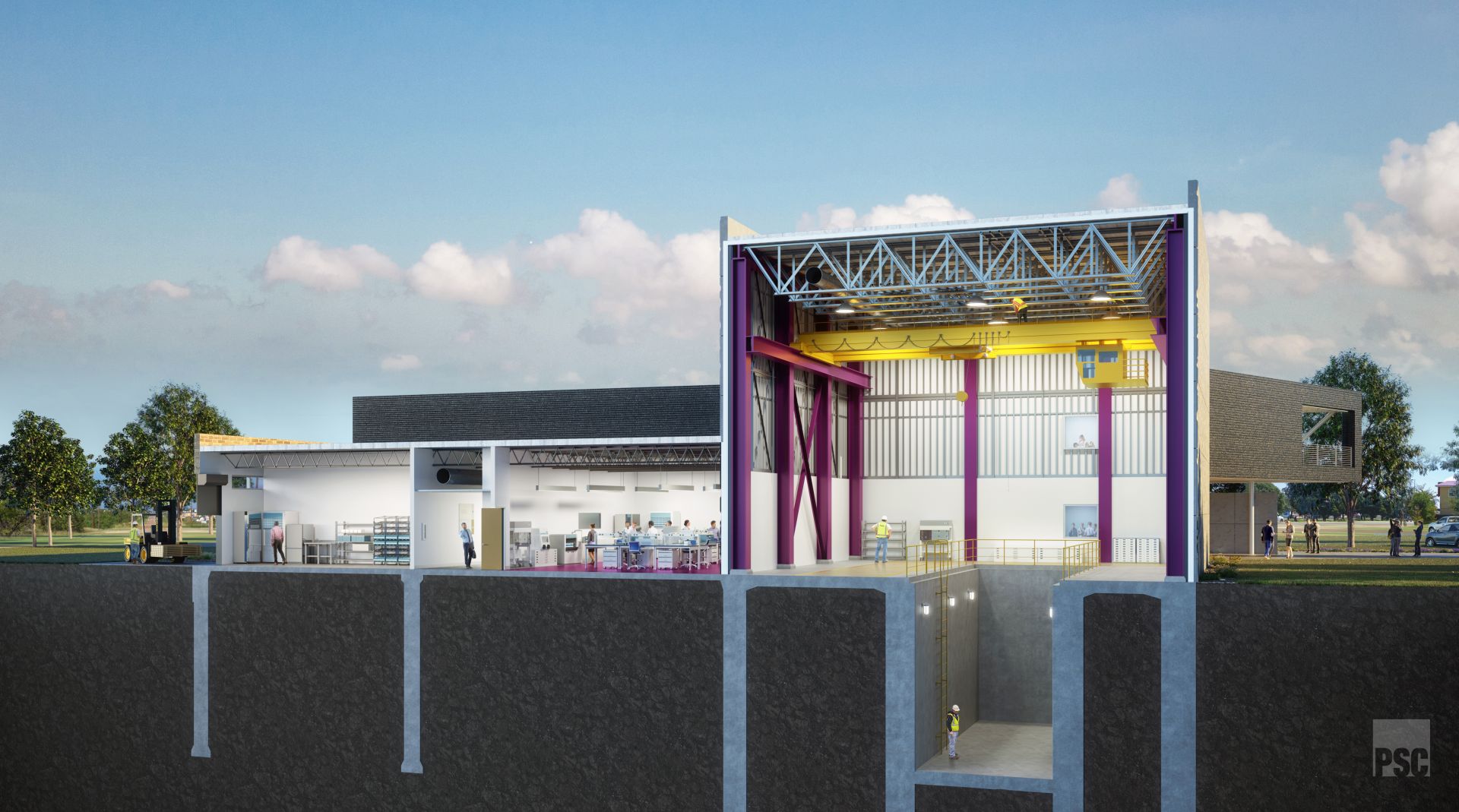Participants celebrate Texas A&M’s announcement about hosting SMR units from four nuclear companies. (Photo: Texas A&M)
Texas A&M chancellor John Sharp has announced that the university could soon become a home to small modular reactors from four advanced nuclear companies: Kairos Power, Natura Resources, Terrestrial Energy, and Aalo Atomics.
A fuel rod is loaded into the core of PRR-1 SATER in this 2022 photo, in preparation for its operation. (Photo: PNRI)
The Philippines generates none of its electricity from nuclear energy. Until recently, it was even without a functioning research and training reactor. The lack of a nuclear facility has led to a dearth of scientific expertise in nuclear science and nuclear engineering in this nation of roughly 117 million people. Twenty-nine-year-old Ronald Daryll E. Gatchalian is on a mission to change that.
Officials from the U.S. and Romanian governments, NuScale, and Nuclearelectrica gather at the University Politehnica of Bucharest on May 12 to debut the first NuScale E2 Center in Europe in preparation for the deployment of a VOYGR SMR power plant in Doicești, Romania. (Photo: NuScale Power )
NuScale Power has announced the opening of its fifth Energy Exploration (E2) Center, at the University Politehnica of Bucharest, in support of the small modular reactor developer’s ongoing collaboration with the U.S. and Romanian governments and Nuclearelectrica, operator of Romania’s Cernavoda nuclear power plant.
An artist rendering of the Science and Engineering Research Center under construction at Abilene Christian University. The SERC will house the NEXT Lab's new advanced university research reactor sponsored by Natura Resources.
The first university-based molten salt research reactor (MSRR) is one step closer to reality with Abilene Christian University’s Nuclear Energy eXperimental Testing (NEXT) Laboratory recently signing a contract with Teledyne Brown Engineering. After considering more than a dozen engineering firms, the NEXT Lab selected Teledyne Brown to perform the front-end engineering and design work to produce the reactor on the Abilene campus. The contract was described by NEXT Lab director Rusty Towell as “a significant step into the detailed design and construction phase of this project.” The hope is that the 1-MWt MSRR will go critical in 2025.
The NuScale small modular reactor control room simulator will provide the authentic feel of being in the control room at a 12-unit SMR plant. (Photo: Rodolfo Vaghetto)
The Texas A&M Engineering Experiment Station (TEES) has installed the NuScale small modular reactor control room simulator at the Center for Advanced Small Modular and Micro Reactors (CASMR).
TEES performs collaborative research through universities, national laboratories, and state and federal agencies with the goal of finding solutions to global technical challenges.
[CLICK IMAGE TO ENLARGE] A comparison between MOOSE results and the analytical solutions for the fractions of point defects in an irradiated spherical Ni grain with a 500 nm radius. The grain boundary/surface at x = 500 nm is assumed perfect and neutral. (Source: From Frontiers in Materials paper "Surface and Size Effects on the Behaviors of Point Defects in Irradiated Crystalline Solids")
By using a combination of physics-based modeling and advanced simulations, Texas A&M University researchers say they have found the key underlying factors that cause radiation damage to nuclear reactors, which could provide insight into designing more radiation-tolerant, high-performance materials.






.jpeg)





